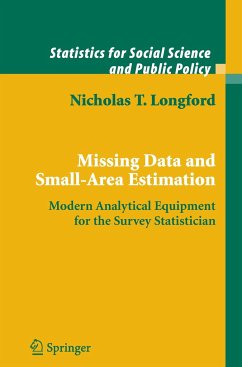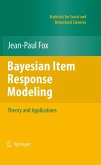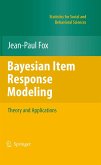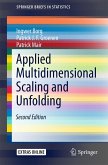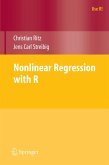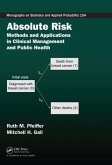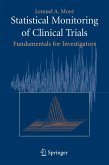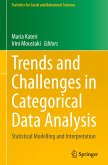This book evolved from lectures, courses and workshops on missing data and small-area estimation that I presented during my tenure as the ?rst C- pion Fellow (2000-2002). For the Fellowship I proposed these two topics as areas in which the academic statistics could contribute to the development of government statistics, in exchange for access to the operational details and background that would inform the direction and sharpen the focus of a- demic research. After a few years of involvement, I have come to realise that the separation of 'academic' and 'industrial' statistics is not well suited to either party, and their integration is the key to progress in both branches. Most of the work on this monograph was done while I was a visiting l- turer at Massey University, Palmerston North, New Zealand. The hospitality and stimulating academic environment of their Institute of Information S- ence and Technology is gratefully acknowledged. I could not name all those who commented on mylecture notes and on the presentations themselves; apart from them, I want to thank the organisers and silent attendees of all the events, and, with a modicum of reluctance, the 'grey ?gures' who kept inquiring whether I was any nearer the completion of whatever stage I had been foolish enough to attach a date.
From the reviews: "...Longford offers a lucid account of these challenges in the context of sample surveys and provides potential solutions. ...Ultimately, this book serves as an excellent reference source to guide and improve statistical practice in survey settings exhibiting these problems." Psychometrika, Vol. 72, No. 1, March 2007 "I am convinced this book will be useful to practitioners...[and a] valuable resource for future research in this field." Jan Kordos in Statistics in Transition, Vol. 7, No. 5, June 2006 "To sum up, I think this is an excellent book and it thoroughly covers methods to deal with incomplete data problems and small-area estimation. It is a useful and suitable book for survey statisticians, as well as for researchers and graduate students interested on sampling designs." Ramon Cleries Soler in Statistics and Operations Research Transactions, Vol. 30, No. 1, January-June 2006 "This book develops methods for two key problems in the analysis of large-scale surveys dealing with incomplete data and making inferences about sparsely represented subdomains. ... A strength of the presentation is the chapters on case studies, one for each problem. Whenever possible, turning to examples and illustrations is preferred to theoretical arguments. The book is suitable for graduate students and researchers ... ." (T. Postelnicu, Zentralblatt MATH, Vol. 1092 (18), 2006) "The book contains an array of topics related to missing data, small-area estimation and combining estimators. The target audiences are graduate students and researchers ... . The main strength of this book is the presentation of case studies and each chapter offers a reasonable number of exercises. Overall, it is well written book, which make a pleasant reading, indeed and I recommend it survey statisticians and those readers interested in the field of missing data and small area estimation." (S. E. Ahmed, Technometrics, Vol. 49 (3), August, 2007) "...[T]this is an excellent book and it thoroughly covers methods to deal with incomplete data problems and small-area estimation. It is a useful and suitable book for survey statisticians, as well as for researchers and graduate students interested in sampling designs." (Ramon Cleiries Soler, SORT, Journal of the Catalon Statistical Institute, June 2006)

